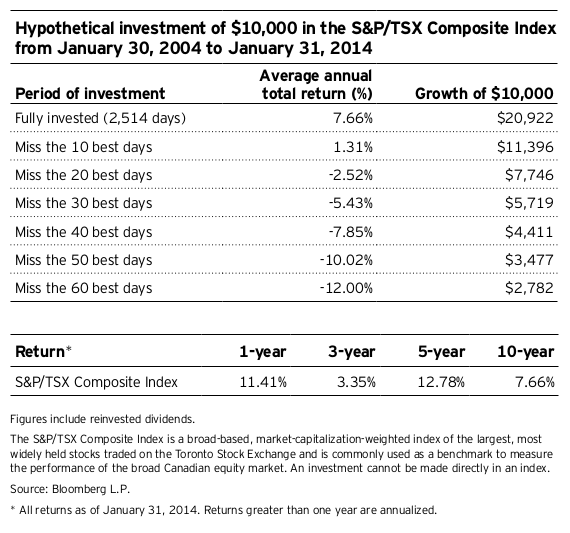
Some investors feel they have enough information to time the market, waiting for the perfect moments to enter and exit.
If this sounds like you, there’s something you should know. While you’re sitting on the sidelines, some of the market’s best single-day performance could slip right by you. A poorly conceived timing strategy means you might be forced to forfeit these gains. Indeed, missing even a handful of days could seriously reduce your portfolio’s long-term performance.
Missing the 20 best days could cut your return by 10%
If you had hypothetically invested $10,000 in the S&P/TSX Composite Index on January 30, 2004, over 10 years your $10,000 would have grown to $20,922 – an average annual total compound return of 7.66%. But suppose that during that period there were times when you decided to get out of the market and, as a result, you missed the market’s 10 best single-day performances over this 10-year period (remember, this is just 10 out of a total 2,515 business days). In this case, your 7.66% return would have fallen to 1.31%. If you had missed the market’s 20 best days (again, just 20 out of a total of 2,515 business days) that 7.66% return would have dropped to -2.52%.
It’s time, not timing, that counts
The more you try to time the market, the greater your chances of missing the market’s biggest single-day gains. That’s why most experienced investors don’t play the timing game. They don’t let the market’s short-term fluctuations sideline them or dictate their investment strategy. They are patient investors – focused on the long term. Of course, past performance cannot guarantee comparable future results. But one thing is clear: it’s time, not timing, that counts when it comes to potentially maximizing your investment return.

From CI Investments.
